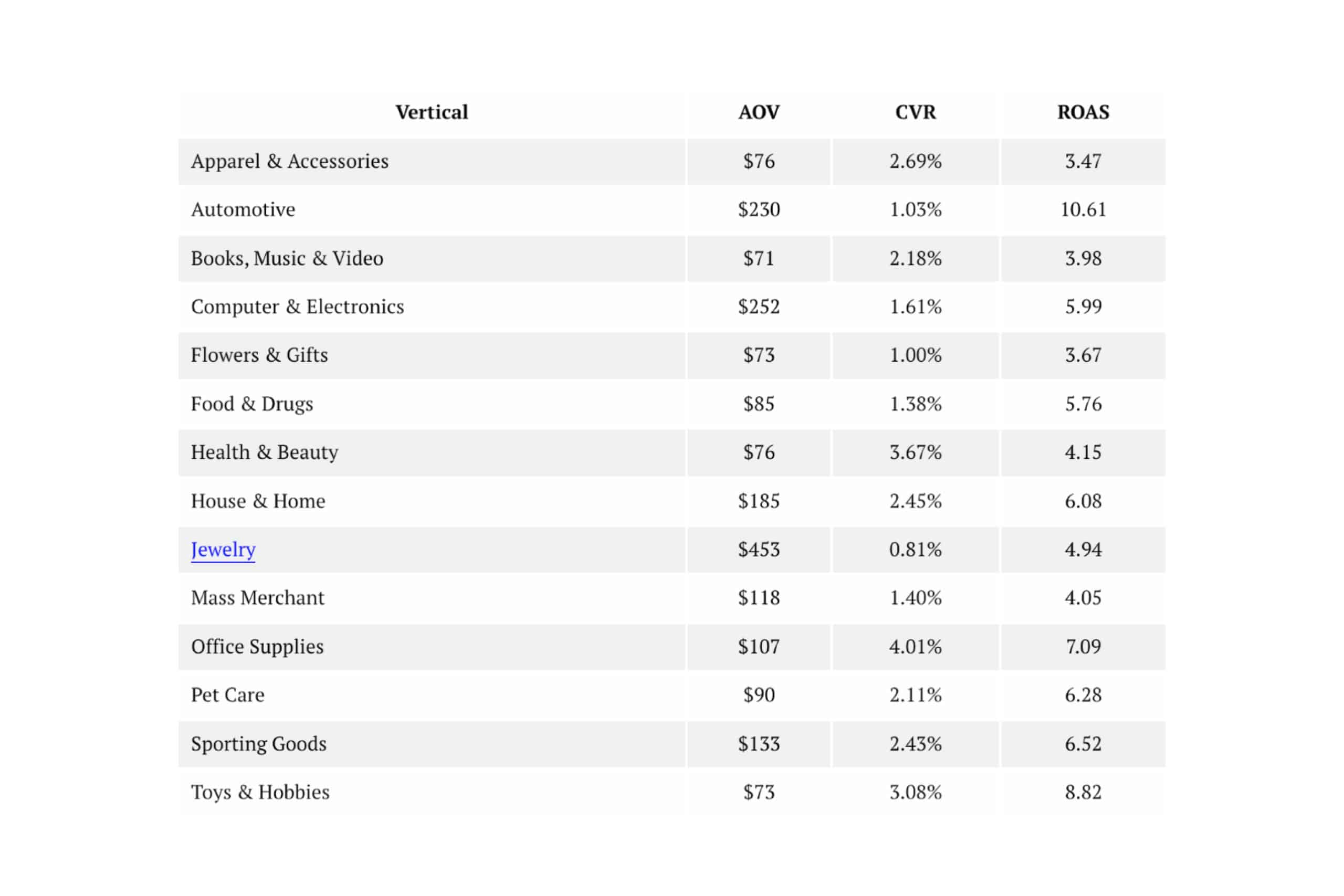ROAS benchmarks across different industries, in this article we will explain the best ROAS ratios to look for and how you can calculate them.
ROAS (Return on Ad Spend) helps you understand how profitable your PPC (Pay-per-click) ads are. It's the most important measurable to track as it helps you understand exactly how much money you’ve made from your ads vs how much you’ve spent.
For example, in 1 month you’ve spent £5000 on Google Ads, and the revenue generated from the ads is £20,000. Therefore your ROAS is 400%.
ROAS can also be expressed as a ratio of 4:1 (for every £1 spent, you’ve made £4).
To calculate your return on ad spend, divide your revenue by the amount you spend on ads.
Follow these steps to calculate your ROAS and understand the return on your ad spend:
Understand the revenue generated from your ads.
Divide the revenue by the cost of the advertising.
Multiply the result by 100 to get the percentage ROAS.
If your ROAS is less than 100%, your advertising is at a loss.
Your goal should be to reach a 400% ROAS.
If you want a quick way to calculate your ROAS, use our handy ROAS Calculator here.
For more on calculating your ROAS head to this article: How to calculate ROAS for ecommerce PPC ads.
A positive ROAS is 400% or 4:1. This should be your minimum target.
Achieving a positive ROAS is important in order that you don’t make a loss on your ad spend.
However, if you only achieve 100-200% then you’re only making enough revenue to pay for the ad costs.
When you’re running ads, you need to factor in all business costs involved in order that you’re making a good profit margin.
As an example, let’s say you’re selling premium A5 notebooks online at £50 each and you’re spending £1000 per month on Google ads.
Here’s the breakdown:
Revenue generated £2000
A5 notebooks (at £50 each) you’ve sold 40
Ad cost £1000
For each notebook sale, it’s cost £25 (£1000 ÷ 40) per acquisition
So far you’ve made £25 per notebook.
Now deduct business expenses such as agency fees, picking and packing, utilities, rent, etc at £1500 per month. £1500 ÷ 40 = that’s £37.50 per month
Google Ad spend at £25 and business costs at £37.50 means each sale isn’t making you a profit, you’re making a loss of £22.50 per notebook
In 1 month, you’ve lost a total of £900
In this scenario, If the ROAS was at 400%, then the profit would be £1500 per month.
In order to make a profit on your PPC ads - a minimum ROAS of 400% is vital.
Achieving a minimum 400% ROAS is vital. Depending on the industry you’re in a 400% ROAS may not be possible or your minimum ROAS should be higher.
In order to understand what you can expect from your industry, review the table below.

Source: Sidecar 2020 Benchmarks report (Q1 2020)
According to Sidecar 2020 Benchmarks report (Q1 2020) the automotive has the highest ROAS of 10.61. Which isn’t surprising considering the cost of a car.
However, looking at the ROAS benchmark table, we can also see the following industries are getting higher than usual return:
Toys & Hobbies - 882%
Office Supplies - 709%
Sporting Goods - 652%
Pet Care - 628%
House and Home - 600%
Which Industry has the Lowest ROAS? Apparel & Accessories has the lowest ROAS at 347%.
There are many traditional strategies you can use to improve your return on ad spend that usually mean making changes to your Ad campaigns.
However, if your ads are already driving traffic and people are buying your products, then look to improve your AOV (Average Order Value), as this is a quick win when it comes to generating a higher ROAS.
Use 2 powerful on-site tactics such as upselling and cross-selling:
Upselling - offer customers a better, bigger or additional item when they browse your products. For example, if someone’s ordering 1 item at £20, why not show them a bundle of 3 items which costs £40? They save £20 and you increase the order value by 100%
Cross-selling - selling related, supplementary products or services based on the customer’s interest. For example, someone adds a £100 pair of sunglasses to their basket, offers them 10% off a sunglasses case if they add the product to their basket and increase the basket value.
Once you understand and track your ROAS, you can identify more opportunities to increase your AOV and in turn generate more profit from your ads.
Sign up for our newsletter.
Stay up to date with latest news, updates and general on-goings.